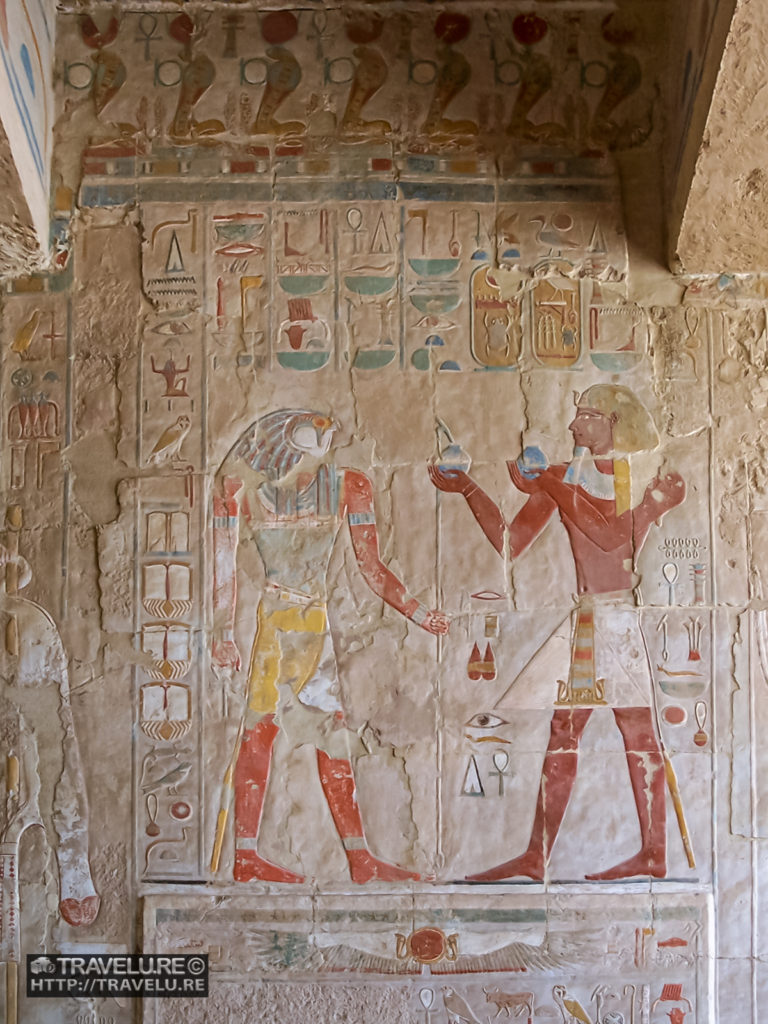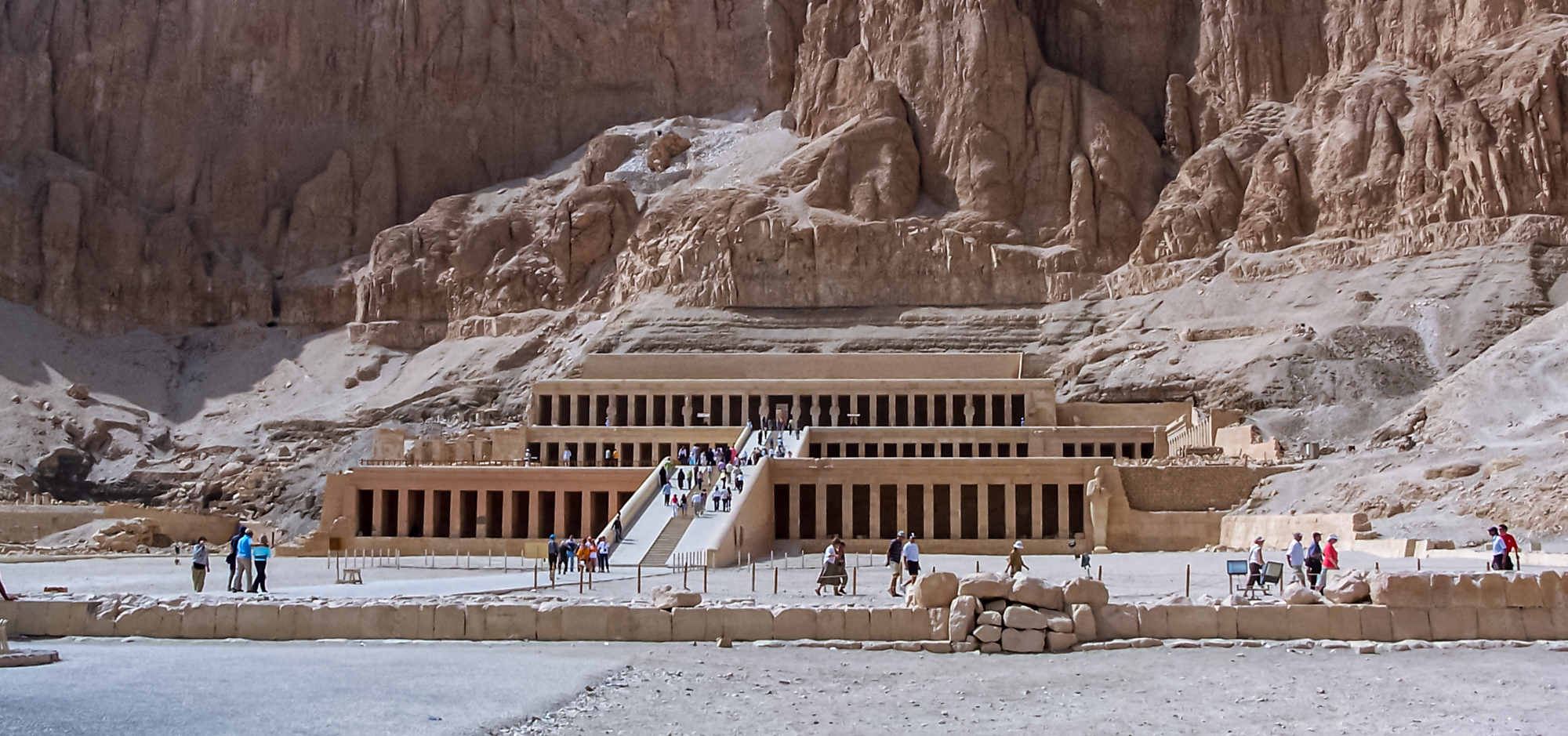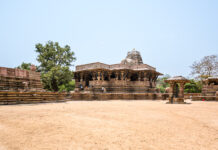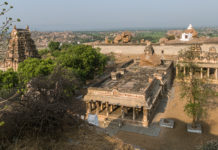Luxor West Bank – A Bumper Crop of Heritage
After crossing Esna’s water lock, we cruised downstream on the Nile through the night. The next morning, we docked in Luxor (ancient name: Thebes). Once the Nile Cruiser docks, the cruise experience continues as a whirlwind rhapsody of heritage sites. While the famed Karnak Temple is on the east bank, many significant sites litter the west bank. Like the valleys of kings and queens, the mortuary temple of Hatshepsut, and the colossi of Memnon. UNESCO inscribed them on its World Heritage List in 1979.

The Colossi of Memnon
As you approach the site, you can spot two gigantic stone statues dominating a vast desert landscape. The statues date back to the 14th century BCE. An awe-inspiring sight, they had used quartzite stone boulders to create them. To ensure the boulders stayed in place, they had wedged in splinters of stone. Olden practice of repurposing building material for newer construction accounts for carvings on many stones in the statues.

Built as guardians, they had stationed them outside the Amenhotep III’s mortuary complex. Today, but for these statues, little else remains of the complex. Legend has it that once upon a time, one of these statues sang at dawn. It would emit a high-pitched sound on some mornings. Damaged during an earthquake, the early morning rising heat and humidity played off a cracked stone. But once they repaired the statue, that singing stopped.

The Valleys of the Kings and the Queens
Ancient Egyptians believed in the afterlife. This led to practices like mummification and provision of articles for the other world. So, these burial chambers of kings and queens had a stockpile of riches and precious artefacts. This called for an artful concealment of treasure. Thus, the kings of the New Kingdom (16th to 10th centuries BCE) chose these lonely valleys. And they sank the tombs deep in the mountain.

While the plan of the tombs varies, the essentials don’t. Descending corridors interrupted by deep shafts and pillared chambers would lead to the burial chamber. The mummified body would rest here in a stone sarcophagus. They stacked the storage chambers around it with furniture and equipment for royal use in the other world.
Sculptures and paintings depicting king or queen with deities adorned the walls of these corridors and chambers. Alongside, they also painted the magical text to help the king navigate during his journey in the nether regions. There are 62 known tombs in this unique necropolis. Notable royals buried here include Tutankhamun, Ramses the third, Queen Nefertari, Akhenaten, and Hatshepsut.

Hatshepsut – The Queen who ruled as King
She ruled Egypt between 1479 and 1458 BCE. Her tomb should have been in the Valley of Queens. Except, throughout her reign, she ruled as a king! Not that she hid her sex, but performed tasks a king would. Though, as the years went by, she ensured her form was of a king – from pharaonic headdress to the kilt, to even the false beard.

Afraid of anonymity, she was the most prolific builder of her time. Besides the 4 obelisks at the temple of Karnak, she left behind hundreds of her own statues. She even commissioned 3 tombs for herself. Most of her statues depicting her as a king seem to be part of a media campaign legitimising her as a pharaoh.
Archeological discoveries later established that her stepson (Thutmose the third) defaced the iconography Hatshepsut took pains to create. And the reason was not emotional, but political. He wanted to legitimise his son’s accession to the throne. This campaign even led to her mummy being thrown into a minor tomb in the Valley of Kings, which delayed its discovery by many centuries.

The Mortuary Temple of Hatshepsut
It was a duty of ancient Egyptian monarchs to build a structure to honour gods and preserve the memory of their reign. This was not just a grandiose gesture but was central to the unification of the state. The Mortuary Temple of Hatshepsut was a fulfillment of that duty. She began construction soon after her coronation. Except, her temple was bigger and more elaborate than any ever built.

The three levels of the temple featured stories told through reliefs, paintings, and statues. Each colonnade had a role. For example, the birth colonnade (on the right of the ramp leading to the third level) illustrates Hatshepsut as a divine creation with god Amun as her true father. And the Punt colonnade (to the left of the ramp) narrates her expedition to a land of Punt, a place far away and forgotten for centuries before her accession to the throne.
The architecture of the temple honours the traditional Egyptian value of symmetry. A well-preserved, yet a sufferer of political vandalism, this temple has her images as a queen intact, but all depictions showing her as a king, destroyed by her stepson.
When you travel to Egypt, remember to visit Luxor West Bank. It reveals the secrets of the peak era of Egyptian civilisation. Next week, I will bring to you the concluding story of my series on Egypt – The Temple of Karnak.

























